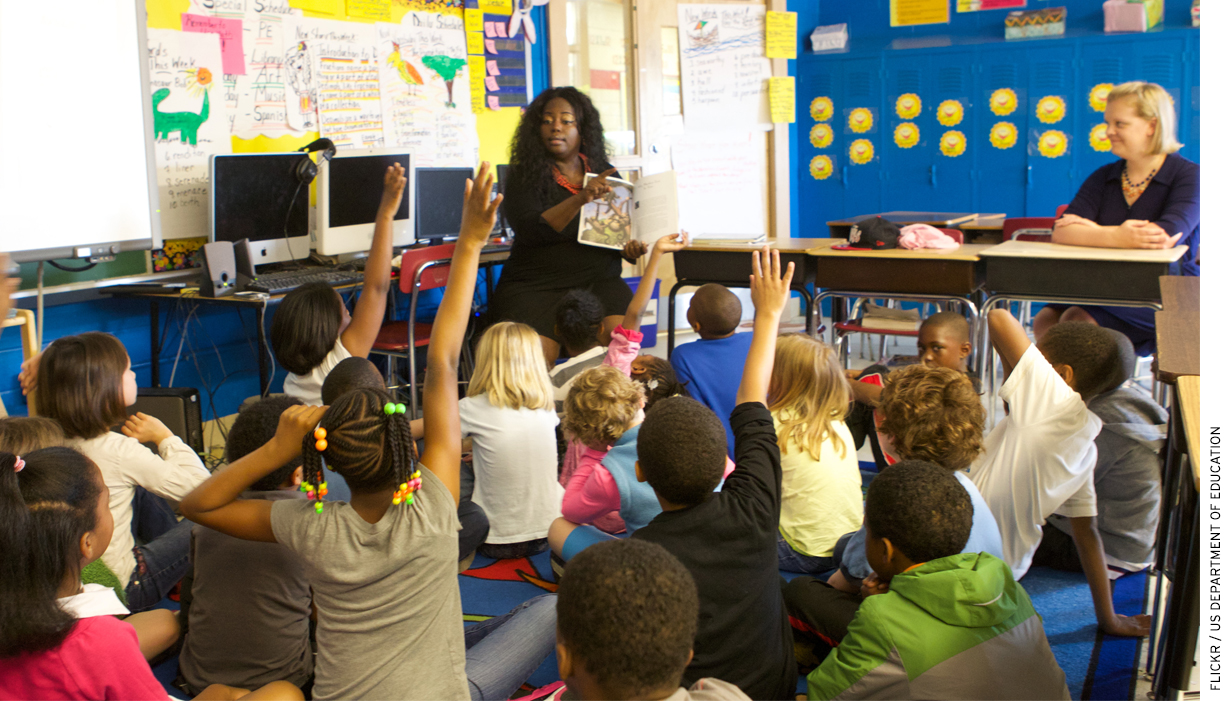
I am an education policy researcher who’s taken a few detours into policy jobs—once in the Office of Data and Accountability of DC Public Schools, and once as the Deputy of Educator Preparation for the State of Delaware under its Race-to-the-Top efforts.
Both of those experiences profoundly shaped how I think about my research, particularly the role of teacher diversity on student outcomes.
In Delaware, I was charged with helping to implement Senate Bill 51, which was explicitly passed to “raise the bar” for the teaching workforce—certainly a laudable goal. The bill required teacher preparation programs to report data on their candidates (and share this information with their university), use higher cut scores on standardized tests for entry, and add portfolio-based assessments as graduation requirements, among other reforms. Several other states passed similar teacher-preparation laws.
It quickly became obvious to me that this policy would have real consequences for thinking about educator diversity, and potentially at a very high cost. You might raise an average ACT score—but exclude groups from teaching who are historically underserved by their K-12 education. Adding additional expensive assessments may price out more disadvantaged students. Or some programs might be discouraged from placing their graduates in high-needs, hard-to-staff schools because of those schools’ lower-than-average test scores.
We know that teachers matter, as this has been a focus of the past decade of school reform. Teachers are widely agreed upon to be the most important in-school factor influencing student achievement, but we are less sure about the mechanisms through which teachers can have an impact.
We also know that diverse teachers matter. Several recent studies have shown this, including my own work on student discipline and long-term student outcomes. At the Urban Institute, we’ve shown that there are huge representation gaps for teachers of color and that the supply of teachers of color is greatly constrained by the number of college graduates of color.
We also know that individuals who have teaching degrees and who are black are less likely to be teaching than their white peers.
All of this means we are facing some real challenges in obtaining the high-quality, diverse teacher workforce that we need. The field acknowledges these challenges, but we must consider that efforts to raise the bar may have adverse impacts on attaining diverse candidates. For example, the Council for the Accreditation of Educator Preparation explicitly sets standards around teacher preparation candidate diversity.
Teaching is not the only profession that grapples with this tension. Because of racial disparities in K-12 education, many fields with barriers to entry that include testing and certification also face these challenges.
The field of personnel psychology has termed this tension between accurate predictors of performance and differences between groups the “diversity-validity dilemma.” The teaching profession may find itself in a similar circumstance where the selection instruments used for teacher-preparation candidates and eventual new hires may unintentionally decrease diversity. There’s evidence that certification, for example, may serve to exclude some teachers we might want in the classroom. We’ve also seen teachers of color struggle to pass certification tests.
And it’s not clear that these tests have any predictive value in terms of eventual student achievement. We may be losing more than we’re gaining. The instruments selected by policymakers are not necessarily proven to be related to effective teaching. The research on these instruments’ relationship to eventual student achievement show that they are of limited value.
To be sure, there are preparation programs that produce high-quality, diverse candidates. Homegrown models such as the Capital Teaching Residency in DC and the Boston Teacher Residency produce excellent, diverse educators. I believe that programs such as these are essential in creating the workforce that will help us serve all students well. States can also partner with their HBCUs to create pipeline programs.
Finding a solution to this challenge is critical for policymakers—who may not fully understand the tradeoffs between these types of policies and the potential for negative student outcomes. We can have the diverse workforce we need.
— Constance Lindsay
Constance Lindsay is a research associate at the Urban Institute.
This post originally appeared on Rick Hess Straight Up.


